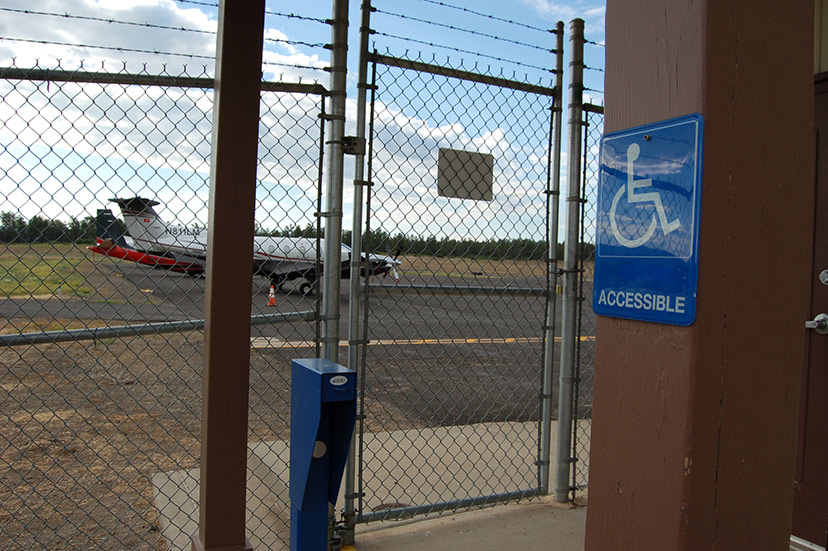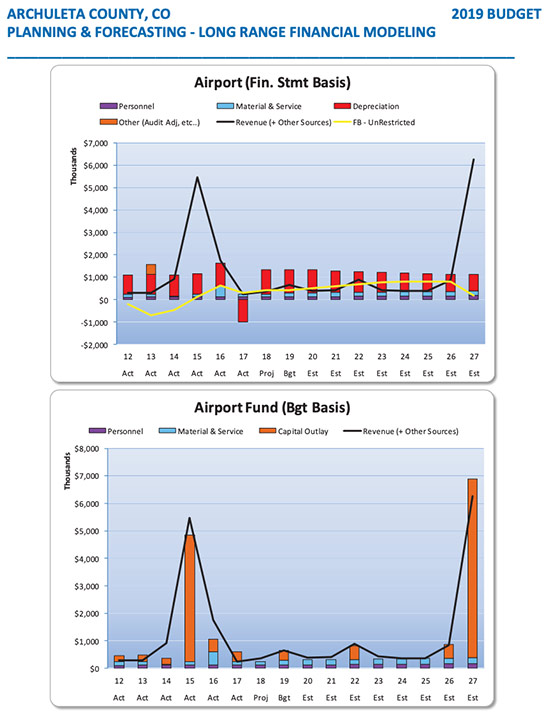I have a friend who’s looking at purchasing a house in Aspen Springs — one of the more affordable neighborhoods in Archuleta County, but not nearly as affordable as it was 10 years ago. Unfortunately, the house in question was built without a proper septic system. To add a County-approved septic system will likely cost between $20,000 and $30,000.
As I understand the situation, most of the cost for a septic system relates to engineering and construction, but Archuleta County — through its new Water Quality Department — will likely expect to be fully reimbursed for the staff time required to inspect and approve the septic system.
Thinking about how government operates in 2023, many public services are fee-based, while others are funded by community-wide taxes. In general, if the public service benefits the entire community — say, for example, the repair and repaving of Piedra Road — we understand that the costs should be borne by the entire community. Presumably, we all drive occasionally on Piedra Road.
But if the public service benefits only a single family or individual — say, for example, the inspection and approval of a private septic system — we generally accept the idea that the family or individual ought to pay for that service… perhaps even in a community suffering from a serious housing crisis.
Of course, a private septic system is required by the government for the overall benefit of the community’s water quality, so the argument could be made that a septic system for a private home benefits all of us, and should be subsidized with local taxes.
I’m not making that particular argument in this editorial series, but it could be made.
Readers might also note that I’m not making the argument that Stevens Field — our County-owned airport — benefits all of us. But that argument could be made, and has been made.
When the Archuleta County Airport Advisory Commission published their 2012 Economic Impact Study (EIS), the study had focused partly on the spending habits of 43 airplane owners, and had come to the conclusion that the Pagosa Springs community, as a whole, greatly benefits — economically — from taxpayer investments at Stevens Field.
It would appear that, during the ten years between 2002 and 2011, the Archuleta County government spent about $5.5 million in taxpayer revenues at Stevens Field, basically subsidizing the owners of airplanes.
What have we spent since 2012? And what does the future look like?
The Archuleta County’s 2023 budget shows some revenues coming from airport operations: about $185,000. That includes about $43,000 in ‘Airport Fees’. The County expects to spend about $314,000 operating the airport this year. So then, a subsidy to airport users of about $130,000. Not a terribly large subsidy.
But we appear to be looking forward to maybe $8 million in airport maintenance and improvements between now and 2027.
Who ought to be paying for this maintenance and improvements? All of us? Or the people who are benefiting?
According to an approval at the July 5 Board of County Commissioners meeting, we’re going to see a new Economic Impact Study from the Airport Advisory Commission, possibly by next spring, that may provide some type of answer to those questions. You can download the outline for the EIS here. The reasons for writing a new EIS are given:
- Educating stakeholders about the quantitative (economic) and qualitative (non-economic) impact of the airport to Archuleta County
- Enable the BoCC to make informed budgetary decisions regarding the economic impact of any investments
- Inform the community and improve public relations
- Formulate and / or inform economic development / planning initiatives
- Supplement the airport system plan. To help obtain financial support from the State of Colorado
- Collect data for a robust input to the next Colorado Economic Impact Study (CEIS)
- Inform projects and business lines that would add vitality to regional interests. To measure significance of the airport to specific industries (e.g. Tourism, Charter service, etc.)
The results of economic impact analyses are also used by the FAA as back-up documentation in letters of intent, required environmental documents, and evidence in cost–benefit analysis for specific airport improvements.
Stevens Field currently has one operational runway, and I have been told that, due to the approach and its proximity to the San Juan Mountains, the Federal Aviation Administration (FAA) will never authorize Stevens Field for commercial flights.
When County Commissioner Warren Brown addressed U.S. Senator John Hickenlooper during the Senator’s visit to Pagosa Springs last month, the Commissioner stated that “we might either upgrade our airport’s infrastructure by adding to the capabilities of our current runway, or by constructing a second runway…”
“I think this effort would be beneficial to us in several different ways. One; it would provide a more reliable and timely medical air service. Also, it would allow the Archuleta County-owned airport to seek a new designation. It would provide considerable financial opportunities for the County, should we receive a different designation, where we might be able to open up our airport to limited commercial services such as FEDEX and UPS. And other charter services.
“We are a community on the cusp of greatness. We really are…”
I suspect a fair number of Daily Post readers are wondering if our community is on the cusp of greatness, or on the cusp of economic collapse. I attended the annual retreat of the Pagosa Springs Town Council last week and it was clear, from 10 hours of discussion and conversation, that our community is struggling with some significant economic and social problems, with no obvious solutions in sight.
Is this the right time to increase our subsidies for airplane owners?
When the Archuleta County Airport Advisory Commission published the 2012 Economic Impact Study, I complained to the BOCC that the study did not look at the possible negative impacts of an expanded airport. Nor did that report suggest that airport users ought to play a bigger financial role in paying for airport maintenance and improvements.
I’d personally like to see a 2024 EIS that presents a well-rounded view of the impacts — all the impacts — of Stevens Field. And a look at how the actual airport users can foot the bill.
For a few more ideas on funding for public airports, see today’s article about efforts by Colorado Congressman Joe Neguse.


